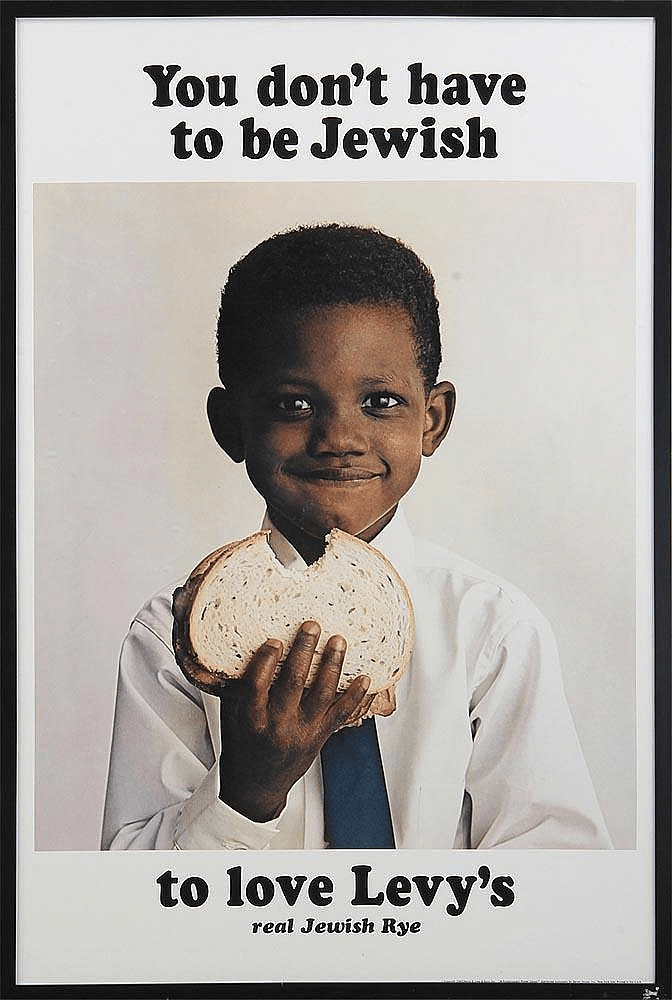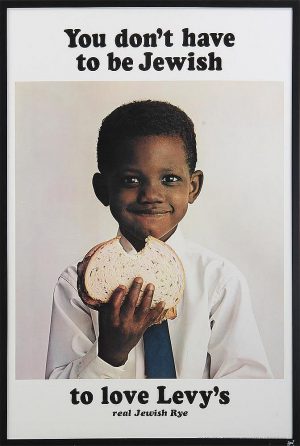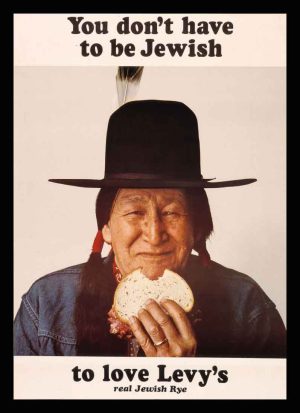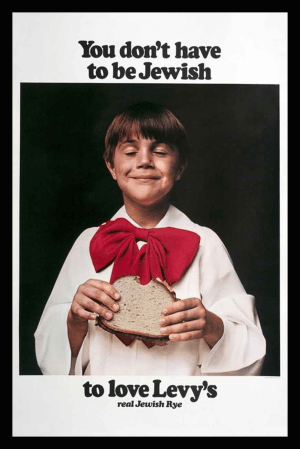
24 Nov “You don’t have to be Jewish to love Levy’s Real Jewish Rye Bread”
New Yorkers and many others still recall with pleasure the iconic Levy’s rye bread campaign.
Striking series of advertisements that portrayed some of the stereotyped but nonetheless, existing people of New York in the 60s – A grinning Irish policeman, a widely smiling Chinese with ore crumb at the corner of his mouth, an Indian with his face just beginning to crack into a grin after his first bite, a happy young African American boy, all ecstatically chewing, all agreeing, obviously, that “you don’t have to be Jewish to Iove Levy’s Real Jewish Rye.
The ads were aimed primarily at the metropolitan area, where, exploiting a singular New York delivery system, they appeared chiefly in the subways. Long part of the day-to-day texture of the city, they were so striking that they drew a national following and were sold individually as posters. The tagline, by legendary copywriter Judith Protas, instantly entered the modern vernacular. The ads became pre-internet memes, widely parodied and copied. Posters sold nationwide, and Levy’s became New York’s top-selling rye. “It is one of the top 10 campaigns in terms of advertising and brand recognition in the 20th century,” Even if you weren’t around for the ad campaign, you’ve probably seen Levy’s ad shared as a nostalgic social media post or dissected in a marketing textbook. Or you might have spotted one on the wall of any number of museums, including the Smithsonian American Art Museum in Washington The ads were a kind of affirmation of the city’s ethnic diversity and are still remembered years after they began to appear.
In 1961, the campaign was a breakthrough. In an era when brands still hid their Jewish identities, Levy’s did more than lean into their Jewishness, they overstated it. After all, rye bread isn’t exclusively Jewish. Decades before diversity was a corporate buzzword, the campaign by the firm Doyle Dane Bernbach (DDB) was one of the first to be racially inclusive. In an era when billboards and magazines almost always featured white suburban families, people took notice. Malcolm X, on a 1964 photoshoot for Now! magazine, told Civil Rights activist and photographer Laurence Henry, “Take my photo next to this ad.” He posed below the photo of an African-American child munching on Levy’s. “I like it,” he said.
The Levy’s rye bread campaign was not only a successful marketing effort but a celebration of the diverse people of New York and a bold assertion of Jewish identity. The ads remain a cultural touchstone, a testament to the power of inclusivity in advertising. The campaign’s legacy is a reminder of the enduring impact that great advertising can have on society and culture.
-
Famous Original Vintage 1960s Levy’s Rye Bread Poster “You don’t have to be Jewish to love Levy’s”. 1960s
$1,500.00 Buy Now -
Famous Original Vintage 1960s Levy’s Rye Bread Poster “You don’t have to be Jewish to love Levy’s”. 1960s
-
Famous Original Vintage 1960s Levy’s Rye Bread Poster “You don’t have to be Jewish to love Levy’s”. 1960s
$0.00 -
Famous Original Vintage 1960s Levy’s Rye Bread Poster “You don’t have to be Jewish to love Levy’s”. 1960s
$0.00






Sorry, the comment form is closed at this time.